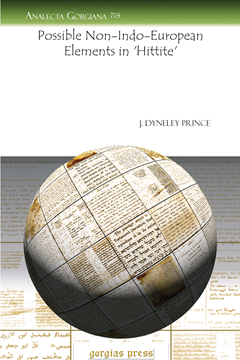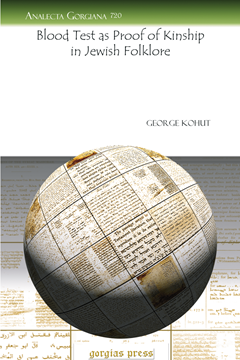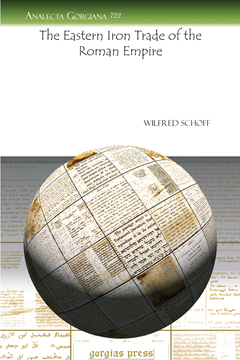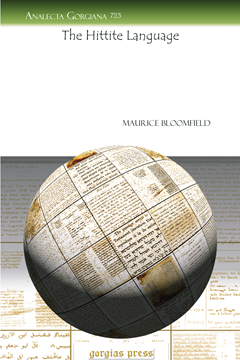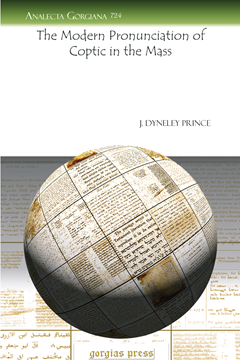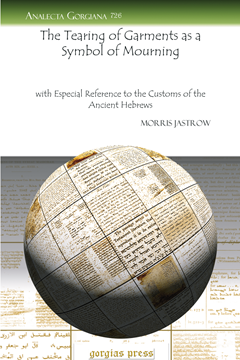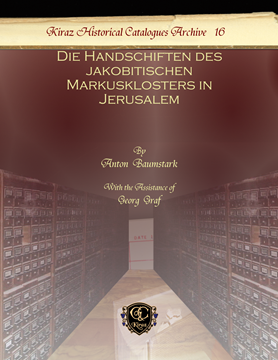Possible Non-Indo-European Elements in 'Hittite'
Series: Analecta Gorgiana 719
ISBN: 978-1-61143-013-4
Prince believes that Hittite shows marked non-Aryan peculiarities. He attempts to examine some important points in the morphology of Hittite in order to determine whether or not some of the most salient forms are of non-Aryan, rather than Indo-European.
$34.00 (USD)
Blood Test as Proof of Kinship in Jewish Folklore
By George Kohut
Series: Analecta Gorgiana 720
ISBN: 978-1-61143-014-1
Blood, among the Jews, possibly because it was held to be symbolic of the soul, was an object of sacred awe. The ancient practice of covenanting by means of blood is widely-practiced as a result of ethnic superstitions.
$34.00 (USD)
Recent Discussions of Totemism
By Crawford Toy
Series: Analecta Gorgiana 721
ISBN: 978-1-61143-015-8
The meaning of the words “totem” and “totemism” have not been consented as of yet. However, totemism has been designated as an exogamous organization in which a clan is allied by an intimate and sacred bond to a natural object.
$34.00 (USD)
The Eastern Iron Trade of the Roman Empire
Series: Analecta Gorgiana 722
ISBN: 978-1-61143-016-5
The appearance is given in the Roman text, Historia Naturalis, that the Seres were a people who imported iron and silk to Rome from China. However, an agreement has never been reached as to the exact origin of this people.
$34.00 (USD)
The Hittite Language
Series: Analecta Gorgiana 723
ISBN: 978-1-61143-017-2
Friedrich Hrozny believes that Hittite is an Indo-European language. On face value, Hrzony makes a strong case. However, Maurice Bloomfield is not entirely convinced by Hrozny’s evidence that Hittite belongs to this etymological group.
$34.00 (USD)
The Modern Pronunciation of Coptic in the Mass
Series: Analecta Gorgiana 724
ISBN: 978-1-61143-018-9
The name Copt is restricted to the sect which has formed the national Christian Church of Egypt. This article is an attempt to illustrate the main characteristics of the church Coptic as it is uttered in Egypt today.
$34.00 (USD)
The Elephant and Its Ivory in Ancient China
By Carl Bishop
Series: Analecta Gorgiana 725
ISBN: 978-1-61143-019-6
This paper’s purpose is to present a brief synopsis of the available data concerning the Asiatic elephant and the traffic in its ivory during the earlier historical periods in regions where it has now disappeared, particularly in ancient China.
$34.00 (USD)
The Tearing of Garments as a Symbol of Mourning
With Especial Reference to the Customs of the Ancient Hebrews
Series: Analecta Gorgiana 726
ISBN: 978-1-61143-020-2
The tearing of garments and putting on sackcloth are common acts mentioned together in the Hebrew Bible. The author argues that these customs exhibit a tendency in religious observances to revert to the ways of an earlier time.
$34.00 (USD)
Die Handschiften des jakobitischen Markusklosters in Jerusalem
By Anton Baumstark; With the Assistance of Georg Graf
Series: Kiraz Historical Catalogues Archive 16
ISBN: 978-1-61143-024-0
This work is a catalogue of 38 Arabic and Syriac manuscripts found in the Syrian Orthodox Monastery of St. Mark in Jerusalem; contains liturgical and literary works.
$151.00 (USD)
Katalog der Orientalischen Manuscripten der Stadtbibliothek zu Hamburg
Series: Kiraz Historical Catalogues Archive 18
ISBN: 978-1-61143-028-8
This is the Oriental manuscripts catalogue of the Hamburg City Library, which includes Arabic, Persian, Turkish, Malay, Coptic, Syriac, and Ethiopic manuscripts.
$150.00 (USD)
